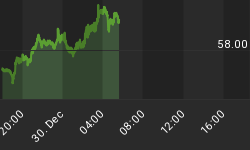Moving averages are extremely helpful tools which allow stock traders and investors to smooth out trends, capture momentum, and isolate time cycles. Technical analysts use moving averages such as the 50-day and 200-day moving averages, as well as many other averages of short-term duration.
Less commonly used, however, are the moving averages of longer-term duration, including those of yearly duration. One long-term moving average series that I've found especially useful for isolating the dominant long-term trend of stock prices is the 10-year MA. More than just a technical indicator of the long-term trend, the 10-year MA is a reflection of the underlying fundamental position of the stock(s) in question. In fact, you might even call the 10-year MA a fundamental tool just as much as a technical tool.
Why should the 10-year MA be considered a fundamental tool, you ask? Because in order for a stock to trend upwards along its rising and unbroken 10-year MA requires that the company be soundly run with a solid balance sheet, good management, and consistently strong earnings. A stock can sometimes rally for short periods of time with poor fundamentals and no earnings, but Wall Street will not assign a good value for very long to such a company. Only the best-run companies with solid fundamental can expect to have an established long-term uptrend in its share price, and this in turn is reflected in a rising 10-year moving average.
A stock that has been rising higher along its 10-year MA is one that has good fundamentals. But what happens when that company for some reason runs into a financial reversal with earnings going into decline over a period of several financial quarters? Eventually, its 10-year MA will be broken, which will confirm that company has entered a bear market. However, as long as the 10-year MA isn't violated to a very large degree the company can often stage a turnaround which will put its stock price back above the 10-year MA. Let's look at some example of this from recent times.
The NASAQ Composite index, subject to a bear market in 2000-2002, actually broke beneath its 10-year MA in 2002 before recovery back above it in 2003. Recovering above the 10-year MA is no small feat and reflects a true turnaround, both technically and fundamentally. Such is the feat the tech stocks which comprise the NASDAQ have accomplished in recent months. This indicates a major reversal of fortune for these tech companies and bodes extremely well for the next few years.

Below is the long-term monthly chart of the S&P 500 (SPX) with 10-year MA. Like the NASDAQ, the S&P penetrated below its 10-year MA in 2002 but quickly recovered back above it. Note the corresponding turnaround in earnings-per-share (EPS) that accompanied the S&P price turnaround and recovery above the 10-year MA.

The Dow 30 index, alone among the three major stock indices, never penetrated beneath its 10-year MA during the bear market of 2000-2002. The Dow double-bottomed above its 10-year MA back in late 2002/early 2003 and has been rising along above it ever since. This reflects the strength of the fundamental of several of the Dow's component companies.

The message of the 10-year moving average is that "reports of the bull's demise are greatly exaggerated." As long as the 10-year MA remains upward-trending and unbroken, so too is the broad market uptrend, technically and fundamentally.
















